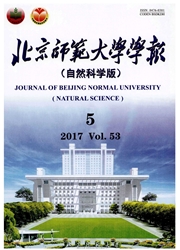

 中文摘要:
中文摘要:
人口空间分布信息在地理学和相关学科研究中占有重要地位。位于中国北方农牧交错区的太仆寺旗深受国家退耕政策影响,在退耕前后人口空间分布发生了剧烈变化。根据2000年和2008年研究区175个行政村不同特点进行空间分析尺度的划分,并分析了各个空间尺度上行政村人口密度与土地利用指数、平均高程、平均坡度、距主要道路和水域距离的相关性。结合GIS和SPSS软件,运用多元回归分析方法对研究区2期人口统计数据进行空间化,并分别用各行政村实际人口密度检验空间化结果。研究中,采取逐级增加自变量个数的方法来寻求精度较高、较合适的人口空间化模型。结果表明,区域人口密度与土地利用类型的关系最为密切;2000年和2008年由空间化模型得到的各村人口密度与实际人口密度的相关性判定系数R分别为O.961和O.881,且两者线性拟合斜率都接近1,精度较高;8年间,研究区人口空间格局发生了很大变化,城镇及其周围人口密度不断增加,其他区域则急剧下降,人口呈现出向城镇及其周围集聚的趋势,而退耕政策是导致区域人口格局变化的主要驱动力之一。
 英文摘要:
英文摘要:
The information of spatial distribution of population plays a significant role in the studies on resource environment, social economics, evaluation of the loss caused by a natural disaster, land use change, and other topics in geography and related disciplines. Traditional method hypothesizes that a population is distributed uni- formly in a region, but the actual situation is not like that. Spatialization of census data for a population becomes rather important for a comprehensive analysis which combines social economics with natural environment. Therefore, the research on spatialization of census data has become a hot spot in geographic science and other so- cial sciences. In this paper, Taips County, a typical region in the agro-pastoral zone of North China, was taken as a study case. This region has been heavily affected by the Grain-for-Green Project in China, and the population in the region has changed dramatically since the implementation of the project. Based on the characteristics of each of the 175 administrative villages in the region in 2000 and 2008, different scales were applied in the analy- sis. Through multi-variables regression analysis of the population's census data and various impacting factors, including land use indexes, topographical indices (mean elevations and mean slopes), and distance to main roads and rivers at the village's level in Taips County, using GIS software and SPSS statistical software as the tools, a model for the spatial distribution of population was established. In the meantime, the actual population density of each administrative village was used to validate the precision of the model. In this study, the number of inde- pendent variables was gradually increased to explore the model of the population's spatialization to achieve high- er precision and make the model more suitable to the study area. It was found that there was a significant correla- tion between population density and land use type of each administrative village. The correlation ratio between ac
 同期刊论文项目
同期刊论文项目
 同项目期刊论文
同项目期刊论文
 期刊信息
期刊信息
